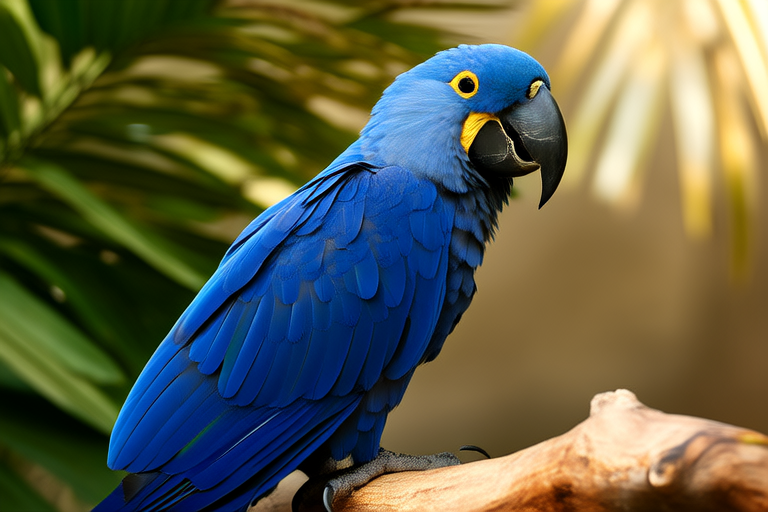From Backyard Bird to Feathered Star: The Journey of Splendid Japalure
In the vast tapestry of avian life, few birds have managed to capture the hearts of bird enthusiasts as dramatically as the Splendid Japalure. This small yet striking bird, known for its vibrant plumage and melodious song, has transformed from a common backyard resident to a feathered star. Its journey is one of resilience, innovation, and sheer beauty.
The Origins and Habitat of the Splendid Japalure
The Splendid Japalure, scientifically named Ptilinopus splendens, originates from the lush tropical forests of Southeast Asia, particularly in regions like Malaysia, Indonesia, and the Philippines. These birds are often found in dense, green backyards, where they thrive amidst the rich biodiversity of the region. Their habitat preference for dense vegetation and abundant fruit trees makes them a common sight in many areas.
These birds are known for their striking appearance, featuring a vibrant red head and throat, a metallic green body, and a long, curved beak designed perfectly for feeding on fruits and nectar. Their natural habitat is characterized by its warm climate, which supports the growth of various plants that provide the Japalures with ample food sources.
The Transformation into a Star
The Splendid Japalure’s journey from a common backyard bird to a feathered star began with its unique attributes. One of the most notable features is its stunning plumage, which not only attracts attention but also plays a crucial role in its survival. The vibrant colors serve as both a warning to predators and a signal to potential mates.
Another key factor in its rise to stardom is its melodious song. The Japalure’s vocalizations are not just beautiful; they are also complex and varied, showcasing the bird’s intelligence and adaptability. These songs are used to communicate with other members of its species, marking territories, and attracting mates. The intricate patterns and variations in their songs have fascinated ornithologists and bird enthusiasts alike.
The Splendid Japalure’s diet, primarily consisting of fruits and nectar, has also contributed to its popularity. This diet not only supports its vibrant health but also makes it a valuable pollinator in its ecosystem. By spreading seeds and pollen, the Japalure helps maintain the balance of its environment, earning it respect and admiration from conservationists.
Behavior and Challenges Overcome
The Splendid Japalure is known for its social behavior, often seen in pairs or small flocks. They are highly territorial during breeding season, fiercely defending their chosen nesting sites. Their nests are usually built high in trees, away from predators, and are carefully constructed from twigs and leaves.
Despite their beauty and intelligence, the Splendid Japalure has faced numerous challenges. Habitat destruction due to deforestation and urbanization has significantly reduced their natural habitats. Additionally, the illegal pet trade has posed a threat to their population. Conservation efforts, however, have played a crucial role in protecting these birds, ensuring their survival and allowing them to continue their vital roles in their ecosystems.
One of the most remarkable achievements of the Splendid Japalure is its ability to adapt to changing environments. In response to habitat loss, many Japalures have adapted to living in suburban and urban areas, where they find new sources of food and shelter. This adaptability has not only ensured their survival but has also made them more accessible to bird enthusiasts, further enhancing their popularity.
Diet and Unique Features
The Splendid Japalure’s diet is a significant part of its lifestyle and survival strategy. Primarily frugivorous, their diet consists of a variety of fruits, especially those rich in antioxidants and vitamins. This diet provides them with the necessary nutrients for their vibrant health and longevity. They also consume nectar, which adds variety to their diet and contributes to their role as pollinators.
The Japalure’s beak is uniquely adapted for their diet. It is long and curved, perfect for extracting nectar from flowers and peeling fruit skins. This adaptation allows them to access food sources that other birds might miss, giving them a competitive edge in their environment.
Moreover, the Splendid Japalure’s intelligence plays a crucial role in their survival. They are known for their problem-solving skills and ability to learn from experience. This intelligence aids them in finding new food sources and adapting to changes in their environment, ensuring their continued success in the wild.
The Impact and Legacy
The Splendid Japalure’s journey from obscurity to prominence is a testament to the power of nature’s beauty and resilience. From a common backyard bird to a feathered star, the Japalure has captured the hearts and minds of people around the world. Its vibrant plumage, melodious song, and unique behaviors have inspired countless bird enthusiasts and conservationists.
The impact of the Splendid Japalure extends beyond its immediate environment. As a pollinator, it plays a crucial role in maintaining the balance of its ecosystem. By spreading seeds and pollen, the Japalure helps ensure the survival of various plant species, contributing to the overall health of its habitat.
The Splendid Japalure’s legacy lies in its ability to inspire and educate. Through its journey, it has become a symbol of resilience and adaptability, reminding us of the importance of preserving our natural heritage. Its story serves as a powerful reminder of the beauty and complexity of the natural world, encouraging us to protect and cherish it.
In conclusion, the Splendid Japalure’s journey from a backyard bird to a feathered star is one of inspiration and education. Its unique features, adaptability, and contributions to its ecosystem have earned it a special place in the hearts of bird enthusiasts and conservationists alike. As we continue to learn from and celebrate this magnificent bird, we are reminded of the incredible diversity and beauty of the natural world.
